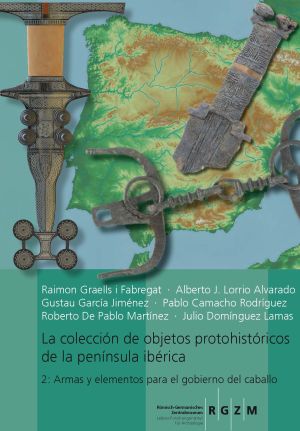
How to Cite
License

This work is licensed under a Creative Commons Attribution-ShareAlike 4.0 International License.
Published
La colección de objetos protohistóricos de la Península Ibérica. 2
Armas y elementos para el gobierno del caballo
The collection of materials from the Iberian Peninsula held in the RGZM consists of ca. 150 objects, divided into two groups with particular characteristics and problems: the clothing ornaments (published in 2018 in the first volume of this catalogue, Kat. 49, 1) and the weapons, which we are concerned with here.
The second volume presents the arms and horse harnesses, an exhaustive analysis of the ensembles with which they were associated and, not least, the many ensembles and weaponry that throughout the 20th century were offered to the museum for acquisition but did not make it into its collection.
We have replicated part of the methodology applied in the first volume, which consisted of studying the materials by categories and types, enriching the study with 3D recreations in order to improve the clarity of the exposition and make the discussion of the complex elaborations more comprehensible. One difference with respect to the ornamentation dossier is that many of the weapons are recorded as part of assemblages, probably funerary. This information has not been underestimated, but it has not guided the initial approach of the study. We have been concerned to carry out an intensive study and comparison of each piece individually. Once this has been done, in a final chapter, we have assessed the coherence of each of the proposed sets. In this way, we have given a further twist to the aim of combining research and teaching with a concern for the recovery of heritage and knowledge of the rhythms and impact of the antiquarian trade.
The project to study the Hispanic collection of the RGZM, begun in Mainz in 2012 on the initiative of the institution’s management, now ends ten years later with the publication of all the metal objects and further consolidates, if possible, the interest and international dimension of this type of project. In short, a full stop to the research collaboration between the RGZM and the University of Alicante.
Volume 1, see here.






